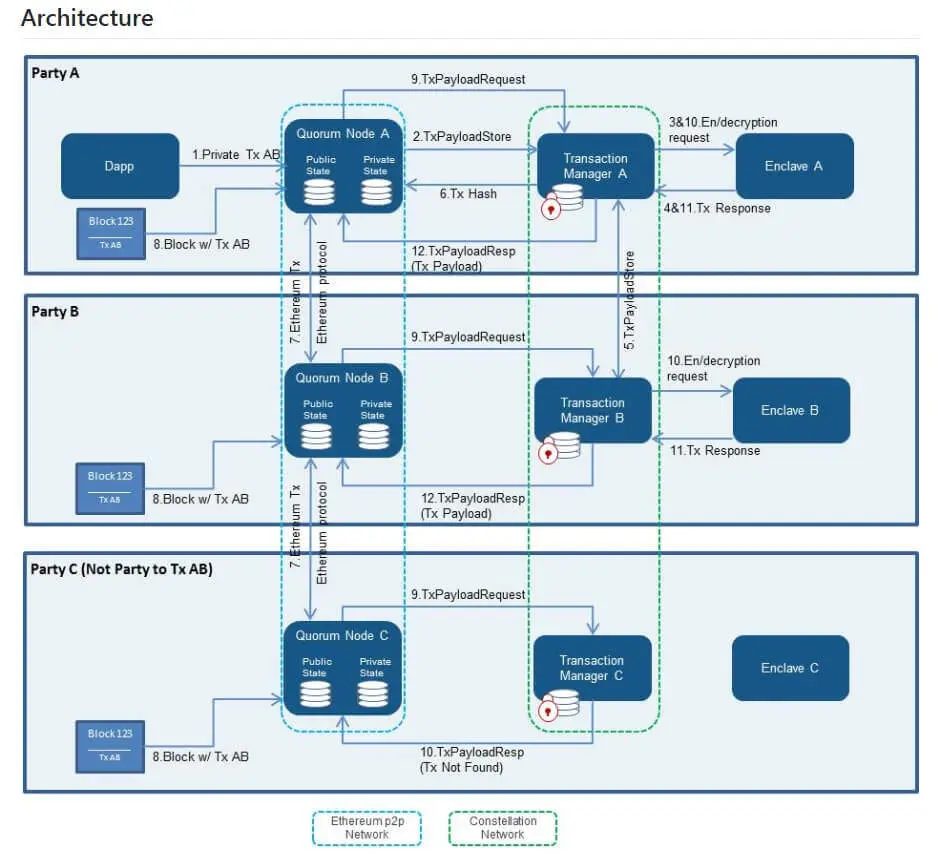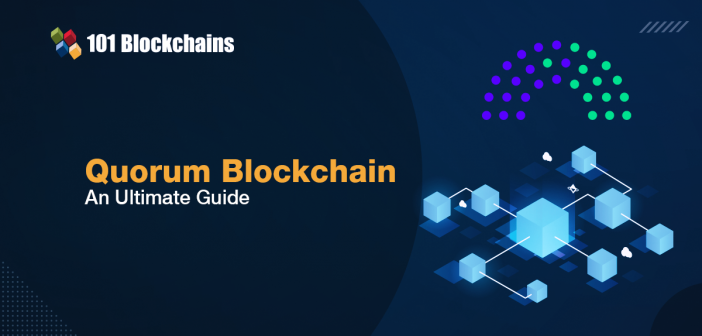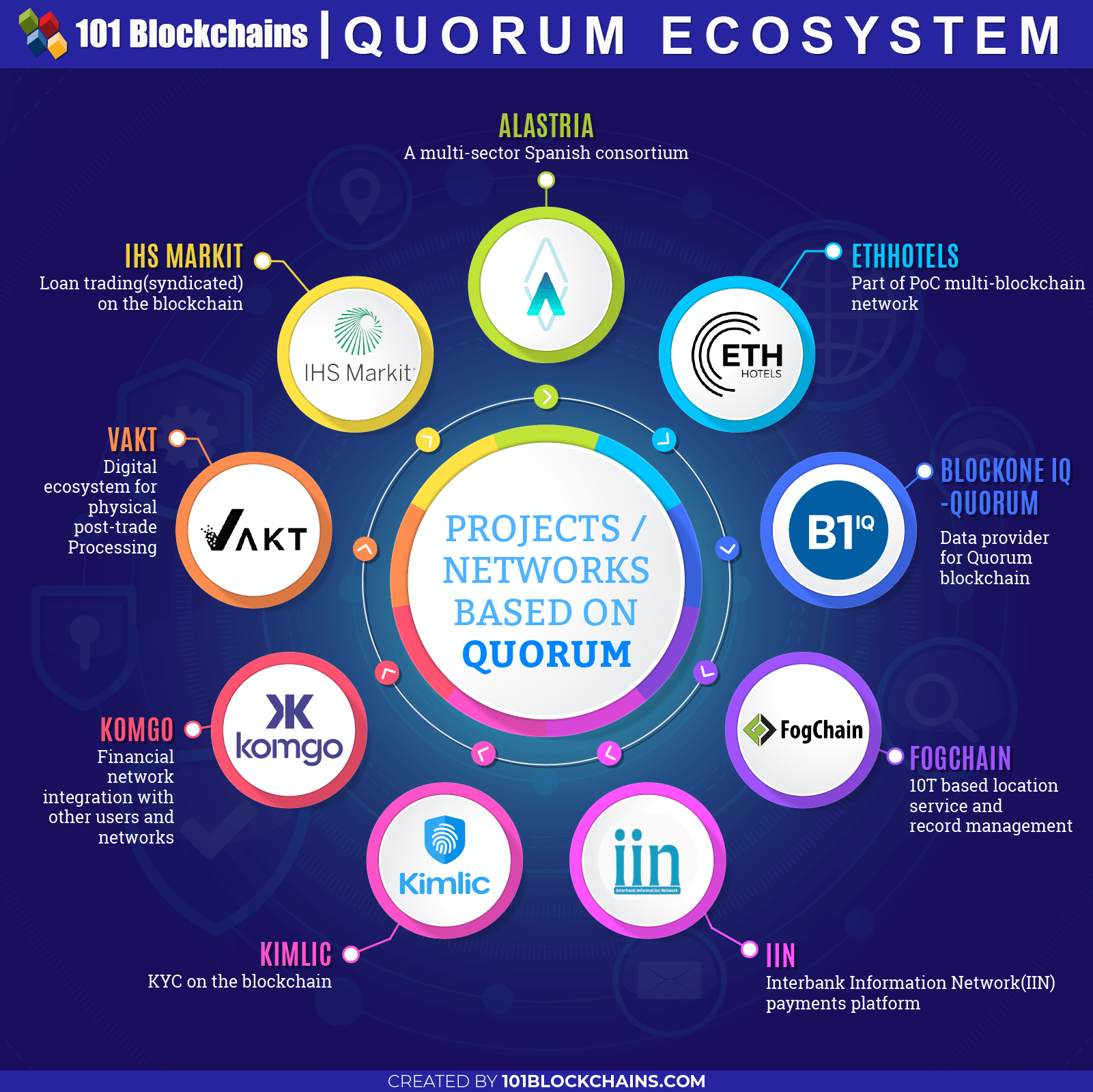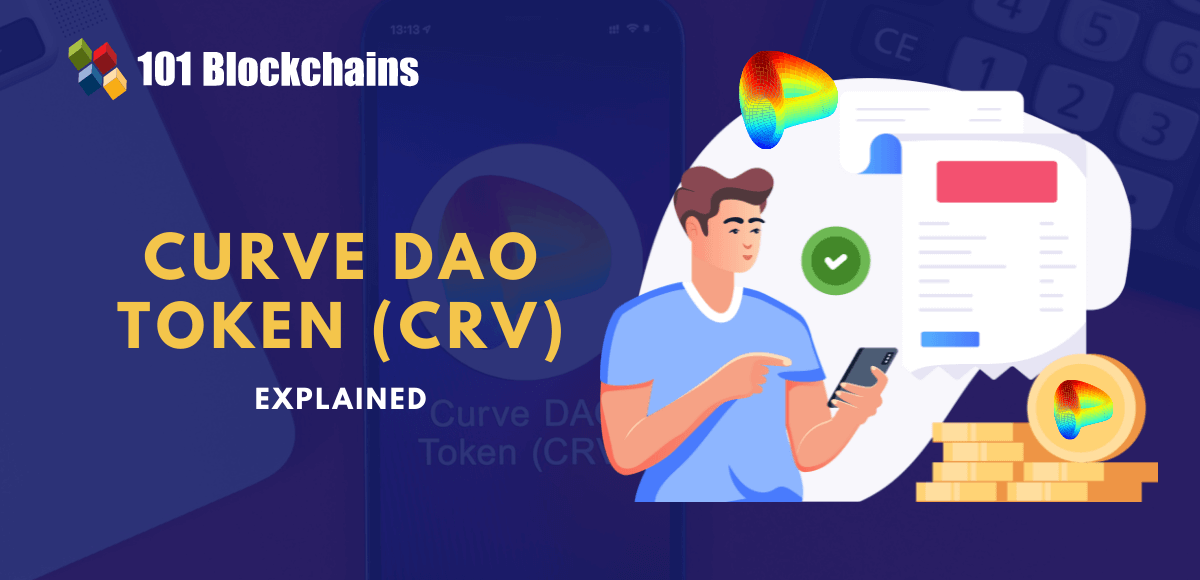The world of blockchain has evolved in the last five years. It all started with bitcoin, but now it is more about improving the blockchain ecosystem as a whole.
If you are following the blockchain news, then you would know that bitcoin’s blockchain is not perfect. It does bring novel ideas such as decentralization, peer-to-peer network, scalability, interoperability, transparency and so on, but it is still the first generation blockchain. That’s why blockchain researchers all around the world are working hard to improve the state of the blockchain and improve the blockchain ecosystem as a whole.
Meet Quorum, an enterprise-focused Ethereum version which tries to improve blockchain technology with its own solution. One of the most important sectors that blockchain aims to revolutionize includes Finance.
So, what is Quorum? Let’s explore and understand what it has to offer.
Want to learn more about the role of blockchain in finance? Enroll Now: Blockchain in Finance Masterclass
Quorum Blockchain Ultimate Guide And Quorum Blockchain Tutorial
Please include attribution to 101blockchains.com with this graphic. <a href='https://101blockchains.com/blockchain-infographics/'> <img src='https://101blockchains.com/wp-content/uploads/2019/03/Quorum-Blockchain.png' alt='Quorum Blockchain='0' /> </a>
What is Quorum Blockchain?
“Enterprise-focused” Ethereum blockchain is one of the simplest ways in which we can describe Quorum. Quorum is the brainchild of JP Morgan who wants to advance blockchain technology in the financial industry.
As you might already know the Finance sector requires a specific kind of blockchain. It should be fast, have high throughput and should work while keeping participants privacy in check. JP Morgan knew that and hence developed Quorum which offers high-speed processing and performance while maintaining transaction details hidden. It also works flawlessly in a permission group where participants know each other. In short, Quorum tries to build a blockchain solution that can cater to the needs of the financial industry. However, it’s usage is not confined to the finance industry only. We will discuss more blockchain use cases in a later section of the guide.
As it is based on Ethereum, it uses smart contracts to facilitate transactions within the blockchain. JP Morgan aim is to implement a Global Network Payments initiative and help banks to use distributed networks. This will increase efficiency, streamline global payments, enable 24/7 status tracking and payment settlement, and so on.
What’s the need for such a system?
Before we head into more information, we also need to establish the need for such a system. Do we need Quorum blockchain platform? If so, why? Let’s explore.
The finance sector is controlled by many organization who deploy their way of handling all the information out there. It functions properly for the most part. However, it is not perfect. Many issues plague the finance industry including lack of information control, public transparency and so on. Even the traditional blockchain solution fail to live up to the need of the finance industry even when they offer features such as immutability and traceability.
The solution is a blockchain system that offers private control through automation. Quorum provides just that and helps each financial organization to customize their blockchain according to their needs. The core of Quorum tries to solve the financial institute issues. Quorum improves over the existing blockchain solution and provides the following features that are required to make it work properly.
- Enhanced contract privacy and transaction
- Better performance
- Proper peer and network management
- Voting-based consensus mechanisms
Quorum Blockchain Features Explained
To better understand what Quorum blockchain platform has to offer, let’s go through the Quorum blockchain features one by one.
Privacy and Transparency: Privacy is always a key aspect of any blockchain solution. Quorum understands it and hence offers both transaction-level privacy and network-wide transparency. These parameters are also not locked and can be customized by the business themselves. Smart contracts play a crucial role in the customization. Also, all the transactions including smart contracts(both private and public), are validated by every node within the blockchain.
Private smart contracts play differently within the network where its state or working is only known by the parties or any approved third-party regulators. To ensure security while maintaining privacy, it uses the Zero-knowledge Security Layer that ensures private settlement is done without any compromise. This is one of the most important Quorum blockchain features.
Performance and Throughput: Performance has always been a strong suit for Quorum networks. They can handle hundreds of transactions per second. Also, the transaction speed can be configured according to smart contracts and the network configuration. With optimization, the number of transactions can be improved significantly. To ensure better performance, it also utilizes a vote-based QuorumChain RAFT consensus algorithm. It also uses Istanbul BFT consensus algorithm which is contributed by AMIS.
Permission & Governance: As financial institutes are private, it was necessary to allow permission approach. Quorum does that and ensures proper transactions between a group of known permissioned participants. However, currently, it is only to be managed manually. Governance can also be managed through a smart contract based tool. These tools are built using cybersecurity best practices.
Quorum is open source
One of the most critical aspects that makes Quorum more appealing to financial institutes is its open source nature. This also means that it is free to use and there is no Quorum blockchain price. Enterprises can take full advantage of the fact that it is open source and bring the best out of the Quorum blockchain platform. So, what are the key features that make Quorum a must pick for the financial organizations out there? Let’s explore.
Trust: Trust is required for any technology out there. Blockchain brought digital trust and ensured that both parties played safe through its system. Also, the fact that no centralized authority can partake in the process, it is considered trustworthy. Open source, on the other hand, brings more trust to already impressive blockchain projects. This means that the code is verified and authenticated by developers with different interest, demographics and learning curve. Also, Quorum utilizes signature validation which brings trust in a permissioned network considering that anonymous network doesn’t utilize them in the first place. Quorum brings the best of both worlds.
Maturity: As Quorum is based on top of Ethereum, it already inherits all the key properties of Ethereum blockchain. As Ethereum has gone through a lot of iteration, it automatically benefits and brings out a more mature blockchain that can be developed and evolved alongside Ethereum. Quorum has also planned to add new features and also welcome public contribution.
Community: Open source projects always have a huge community. The same is true for Quorum as it invites developers all across the world to contribute to the blockchain development. The license used by Quorum is GPL/LGPL which is similar to Ethereum.
Quorum Blockchain Projects
Please include attribution to 101blockchains.com with this graphic. <a href='https://101blockchains.com/blockchain-infographics/'> <img src='https://101blockchains.com/wp-content/uploads/2019/03/Quorum-projects.png' alt='Quorum blockchain projects='0' /> </a>
Quorum vs Corda vs HyperLedger Fabric
Quorum is not the only blockchain that is trying to improve the state of the industries surrounding us. Other popular blockchain solutions that hold promise include Hyperledger Fabric and Corda. As we want to understand Quorum completely, we also need to ensure that we compare it with other similar blockchain solutions. Also, the fact that each one of them is based on Ethereum makes the comparison a compelling one. So, let’s get started.
Note: Check out Ethereum vs Hyperledger to learn about a completely different perspective.
Do you aspire to enhance your Blockchain career with the advanced Enterprise Blockchain professional skills? Enroll Now: Getting Started with Hyperledger Fabric
Enterprise Ready and their approaches
All three of the blockchain solutions, Quorum, Corda and HyperLedger Fabric are enterprise blockchain. They are enterprise-ready and can work on a large scale. Every blockchain takes a different approach: HyperLedger Fabric is modular and can be extended to other systems or across industries such as healthcare, supply chain, and so on. Corda, on the other hand, is focused on automating and recording legal agreements between two parties. Also, we already know that Quorum by JP Morgan focuses on providing a permissioned enterprise blockchain to the finance sector.
Consensus algorithm
Another key difference between the three blockchain solution is the consensus algorithm that you are using. To get a clear idea, let’s go through each one of them below.
Hyperledger Fabric: The consensus algorithm in Hyperledger Fabric is more dynamic than others. It uses a wide variety of consensus algorithm and covers the entire transaction. The transactions are executed beforehand and then finally committed to the blockchain. This approach is efficient as it powers multiple nodes at the same time, improving scalability and overall performance.
Corda: Corda is more focused on privacy and security issues for banks. That’s why they are inclined towards transactions and state changes. This approach also improves scalability. The critical difference between Corda and other blockchain solution is the introduction of Notaries. They act similar to miners and are given the responsibility to validate transactions. Once verified, the transaction is then added to the immutable chain. The choice of a notary to be centralized or decentralized depend completely on the banks.
Quorum: Quorum also utilizes a different approach when it comes to consensus algorithm. It uses “QuorumChain” which brings consensus based on majority voting. However, not all nodes are capable of voting. Only a few special nodes are given the ability to vote which in turn verifies the transaction. To have better fault tolerance, Quorum utilizes Istanbul BFT and Raft-based models.
Peer Participation
All three of the blockchain solution, Corda, HyperLedger Fabric and Quorum are permissioned enterprise blockchain which means that only selected participants that take part in the network.
Smart Contracts
As all the three blockchain solutions are based on Ethereum, they utilize smart contracts. However, their approach to smart contracts is unique in their way.
HyperLedger Fabric, for example, utilize “Chaincode” when it comes to smart contracts. It leverages the underlying consensus and the trust of the blockchain technology. When it comes to the language of choice to write smart contracts, you can use a standard programming language such as Go or Node.js. Their core team aims to enable support for other programming languages in the future.
Corda: Corda’s approach is unique. The smart contracts that are written are similar to prose and hence offers ease-of-use. The legal prose is known as Ricardian Contract and requires participants to sign the contract for validity purposes. It supports two programming language, i.e., Java and Kotin programming languages.
Quorum: Quorum smart contracts can be set to both private and public. Also, it uses Solidity as the tool to program it. However, there is a limitation. Once a smart contract is set private, it cannot be transformed into the public. This Quorum privacy design is imposed to protect the interest of organizations who don’t want their smart contracts to get leaked in any fashion. Similarly, public smart contracts cannot be changed to private ones.
There are tons of other differences between these three blockchain solutions. To get a clear picture, let’s check out the table below.
Table 1: Hyperledger Fabric Vs. Corda Vs. Quorum
| Feature/Metrics | Hyperledger Fabric | Corda | Quorum |
|---|---|---|---|
| Consensus algorithm | Kafka RBFT Sumeragi PoET Pluggable | RBFT Pluggable Raft | Pluggable Istanbul BFT Raft Consensus |
| Throughput | >2000 tps | 170 tps | A few 100s |
| Tokens | FabToken(not yet released) | - | Ether |
| Zero Knowledge Proof | Yes | No | Yes |
| Smart contract language | Java, Golang, NodeJS | Java, Kotlin | Solidity |
Quorum Development
Quorum is a very active project. There are currently 318 contributors from all across the world. Not only that the Quorum GitHub build has already seen more than 10,000 commits! Quorum is currently using LGPL-3.0 which is similar to Ethereum. This also means that it can be downloaded, modified and distributed without any boundation.
You can learn more about Quorum by reading their Quorum blockchain whitepaper.
You can also check out Quorum blockchain wiki that houses all the information regarding Quorum blockchain platform.
Furthermore, you can check out Quorum blockchain API to learn how it can be utilized and integrated with other systems.
Not sure how to build your career in enterprise blockchains? Enroll Now: How to Build Your Career in Enterprise Blockchains
Third Party Tools/Libraries that you should check out
Tools and libraries are essential to make Quorum blockchain ecosystem healthy. Third parties like Quorum and have developed many tools and libraries. We will be listing a few of them so that you can get a glimpse of how rich Quorum blockchain ecosystem is.
- Quorum Blockchain Explorer: An open-source project that lets you explore Quorum including viewing private transactions.
- Quorum Maker: A utility tool that lets you create Quorum nodes.
- Quorum-Genesis: A command line tool that helps populate the genesis file with makers and voters
- QuorumNetworkManager: A great tool that will help you to manage Quorum networks easily.
Projects/Networks based on Quorum
- Alastria: A multi-sector Spanish blockchain consortium. It is a national blockchain ecosystem that promotes the establishment of DLT semi-public infrastructure. It is aimed to improve services in Spain and will work according to the European regulations.
- Ethhotels – Part of PoC multi-blockchain network
- Blockoneiq-quorum – Data provider for Quorum blockchain. It is an Oracle framework that would help the DLT to use signed content which is generated and captured using smart contracts from Thomson Reuters.
- FogChain – A Quorum network that offers IoT based location service and record management.
- IIN – It is an Interbank Information Network(IIN) payments platform. Ethereum and Quorum blockchain power it. A large number of banks aim to join the network and use the scalable and peer-to-peer solution.
- Kimlic – KYC on the blockchain. It is a decentralized Identity validation platform. It helps startups to instantly onboard users to their Dapps, ICO, STO, and crypto exchanges. This means the user only needs to complete KYC once and then it can be used on different platforms.
- Komgo – An interesting project that helps financial network integration with other users and network.
- VAKT – VAKT provides a digital ecosystem that enables users to do physical post-trade processing. It can be termed as “Post Trade Management Platform.” By doing so, it can act as a single source for trade lifecycle which can be verified when needed. It aims to cover the end-to-end trade life cycle, unlike other solution that only tries to solve a certain part and not the whole problem.
- IHS Markit – Loan trading(syndicated) on the blockchain.
Want to become a certified enterprise blockchain professional? Enroll in Certified Enterprise Blockchain Professional (CEBP) course now!
Quorum Blockchain Consensus Algorithm used by Quorum
Quorum consensus algorithms are the talk of the town as they provide an alternative to the traditional POW/POS consensus algorithm. Also, it is a permissioned network, so POW/POS will simply do not work. So, what consensus algorithms does it use? It uses two consensus algorithm to make the whole idea work, i.e., Raft-based Consensus and Istanbul BFT.
Quorum Blockchain Consensus Algorithm: Raft-based Consensus
Raft is a CFT based consensus algorithm. It enables faster transactions thanks to the 50ms block minting process. Also, saves storage space by only mining proper blocks and not empty blocks. Other key features include on-demand block creation and transaction finality.
Quorum Blockchain Consensus Algorithm: Istanbul BFT
Istanbul BFT is a Byzantine Fault Tolerance consensus algorithm. Its job is to protect the blockchain. The limit until which it protects the blockchain include 30% nodes goes bad. Also, it protects the blocks generated in the blockchain.
Performance Evaluation
Quorum claims that it is fast and have higher transaction speed. Is that true? A team of Arati Baliga, Pandurang Kamat, Siddhartha Chatterjee and Subodh I from Persistent Systems Ltd. carried out a thorough experiment on how Quorum performs.
In the research paper, they used a Quorum blockchain platform. They also set up a suite of micro-benchmarks that are created to work with Quorum. They aimed to study how the smart contracts and transaction parameters affect the performance of the Quorum blockchain such as transaction latency.
Below is a summary of the whole experiment.
- Metrics: Transaction throughput(number of transactions per second)
- Four machines running the Quorum blockchain network with a specification of 8 vCPUs, 16GB RAM.
- Operating system used: Ubuntu 14.04 LTS
- Load generation: Caliper is used to stress the Quorum blockchain network.
- Workloads: Pre-loaded with key-value pair
- Types of Workload used: Write-only, Null, Read, Mix.

Image Source: https://www.persistent.com/
In conclusion, Quorum can scale pretty well and have increased latency when there are too many transactions take place parallelly. RAFT performs better than IBFT when the transactions per second reach above 1650 tx/sec. Also, private contracts work better than public ones as there is less overhead when it comes to handling private contracts. This means that Quorum private blockchain is effective.
If you are interested in learning more about the system, then check out the research paper here: https://www.persistent.com/blockchain-research-paper-on-performance-evaluation-of-quorum-blockchain-platform/
Quorum Blockchain Architecture Discussion
So, how do Quorum works? We will learn more about by going through its architecture and learning about its key components.
The three main components that we need to learn about include the following.
- Quorum Node
- Transaction Manager
- Enclave

Image Source: Hackernoon.com
Quorum Node
Quorum Node is a command-line tool which is a lightweight fork of Geth. It is forked to ensure that it continues to grow with Geth. However, it did come with a lot of different modifications to make it work with Quorum blockchain. For example, QuorumChain consensus algorithm has been introduced in place of Proof of Work. It is also configured only to allow connection from permissioned nodes ditching the P2P connectivity. Other than that, the State Patricia trie supports both public and private state. Another key change is the removal of Gas as it is not required in Quorum blockchain.
Constellation
The next big component of Quorum blockchain architecture is a constellation. It houses the transaction manager and enclave. It is a general-purpose system that ensures that information added to the blockchain remain secure in every possible way. Also, the constellation is not blockchain specific and can be used in other forms of applications.
Transaction Manager: The Transaction Manager takes care of the Transaction privacy and ensures that the transaction data is encrypted during the process. To facilitate the whole process, it can store, allow access and other important data to facilitate the transactions. However, it doesn’t have access to any sensitive information such as private keys. The key here is cryptography which ensures that the data is kept safe throughout the process. Transaction Manager can also be scaled thanks to its stateless/restful state.
Enclave: Enclave facilitates different cryptographic techniques such as participant authentication, transaction history, and other key functions. It ensures that all the operations are performed optimally with focus on scalability. Transaction Manager delegates the encryption/decryption job to Enclave.

Image Source: https://github.com/ConsenSys/quorum
Use Cases of Quorum Blockchain
As we already mentioned that Quorum blockchain is created for the Finance sector. However, this being said, it has an extensive range of application even within the Finance industry. There are many ways Quorum blockchain can be used within the industry. To learn how it can be used, let’s go through some of its use-cases.
Tokenizing Gold Bars: Quorum will be used to tokenize gold bars. This will give an incentive to the miners and also help improve the expansion of Quorum blockchain itself. It will also open new trading opportunities and help blockchain to get adopted faster.
Customized Quorum Private Blockchains: Banks or any private financial institutions can take full advantage of Quorum blockchains. The permissioned nature enables Quorum to be used in all types of settings. The ability to customize from the onset is what makes it an ideal candidate.
Conclusion
Quorum blockchain is a promising blockchain technology. The fact that it is a “soft-fork” of Ethereum makes it more ideal for real-world implementation. It is permissioned and hence can be used by the private organization as their go-to blockchain technology. Another great aspect of Quorum blockchain is its performance, ability to customize through smart contract, and overall transparency. So, are you going to use Quorum for your business? If yes, comment below and let us know why you made a choice. We are listening.
Summary
What is Quorum? Quorum is an enterprise-focused Ethereum blockchain aimed towards the finance sector. It is the brainchild of JP Morgan.
What’s the need for such a system? Yes! Quorum provides financial sector the ability to use effective blockchain technology. Quorum offers permissioned network enabling organizations to customize to their own needs.
Features of Quorum
- Enhanced contract privacy and transaction
- Better performance
- Proper peer and network management
- Voting-based consensus mechanisms
- Open-source
- Community-driven
- Mature
- Trustworthy and enterprise ready
Quorum is Open Source!
- 318 active contributors
- 10,000+ commits
- LGPL-3.0 license
Hyperledger Fabric Vs. Corda Vs. Quorum
| Feature/Metrics | Hyperledger Fabric | Corda | Quorum |
|---|---|---|---|
| Consensus algorithm | Kafka RBFT Sumeragi PoET Pluggable | RBFT Pluggable Raft | Pluggable Istanbul BFT Raft Consensus |
| Throughput | >2000 tps | 170 tps | A few 100s |
| Tokens | FabToken(not yet released) | - | Ether |
| Zero Knowledge Proof | Yes | No | Yes |
| Smart contract language | Java, Golang, NodeJS | Java, Kotlin | Solidity |
Consensus Algorithms
- Raft-based Consensus – Enables faster transaction, improve block storage
- Istanbul BFT – provides fault tolerance, protects blockchain against bad nodes
Quorum Architecture
Three key components
- Quorum Node – a command line tool based on Geth
- Constellation Transaction Manager – It takes care of the transaction data until it gets completed
- Enclave – Enclave handles the sensitive information where the Transaction Manager delegates key functions such as encryption/decryption
Projects/Networks based on Quorum
- Alastria: A multi-sector Spanish consortium
- Ethhotels – Part of PoC multi-blockchain network
- Blockoneiq-quorum – Data provider for Quorum blockchain
- FogChain – A Quorum network that offers IoT based location service and record management
- IIN – It is an Interbank Information Network(IIN) payments platform. Ethereum and Quorum blockchain power it.
- Kimlic – KYC on the blockchain
- Komgo – An interesting project that helps financial network integration with other users and network
- VAKT – VAKT provides a digital ecosystem that enables users to do physical post-trade processing
- IHS Markit – Loan trading(syndicated) on the blockchain
Want to know more about blockchain certification and courses? Enroll in blockchain certifications and courses.







1 Comment
Nice article.
Constellation is covered in scope of this article. Any specific reason that why Tessera is not covered.
Thanks